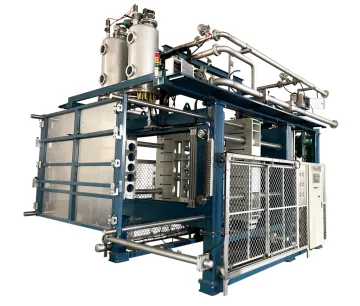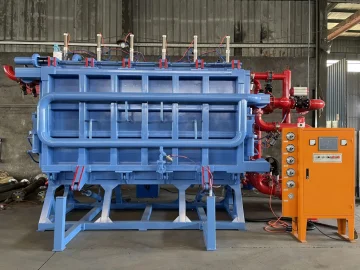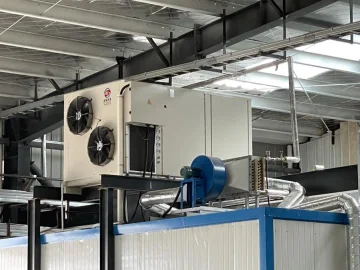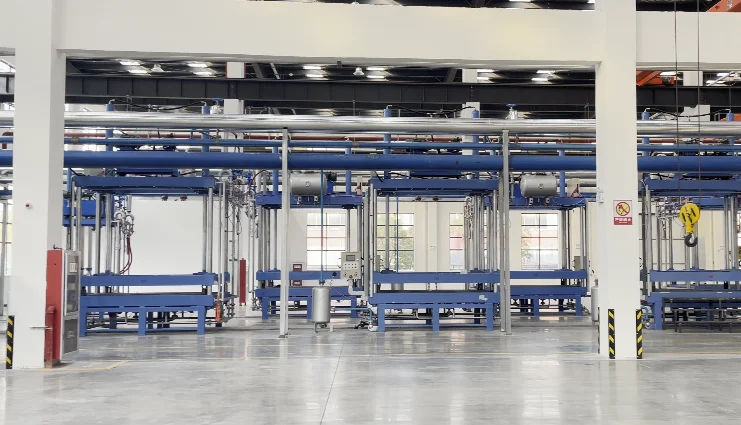Introduction: Welcome to the Foam World of Lost Foam Casting
Lost foam casting has created a deserving and irreparable place for itself in modern industry. It is state-of-the-art generation casting technology that has permeated extensively in various industries from automobile production to aviation engineering. The magic behind this new-generation casting is in foam preparation, an intermediate process whose impact heavily determines the quality, efficiency, as well as cost-effectiveness of the entire process of casting.
Unveiling the Basics
What is Lost Foam Casting?
Lost foam casting, otherwise known as evaporative pattern casting, is a method where the foam pattern is produced and subsequently coated with a refractory coat. The foam pattern coated with refractory is then cast into a sand mold without any cores removal. When molten metal is cast into the mold, the foam pattern is incinerated, leaving a cavity that is subsequently filled with the metal and thus creating the final casting. One of the significant advantages of lost foam casting is that it can cast intricate shapes with high precision and fine surface finish. It also eliminates the traditional pattern removal and core-making operations, saving considerable production time and cost.
The Fundamental Role of Foam in Lost Foam Casting
Foam pattern serves as the master model of the final casting. Its purity reflects directly on the accuracy of measurement, surface finish, and strength of the complete casting. Quality foam pattern assured that molten metal flows evenly into the cavity of the mold, minimizing occurrences of defects such as porosity, shrinkage, and distortion. Furthermore, ease of production and replication of intricate patterns by the foam pattern all contribute to the efficiency of the lost foam casting process. By maximizing foam preparation, manufacturers are able to enhance production efficiency, reduce scrap, and therefore minimize the cost of production.
Researching Foam Preparation Materials
Physical Properties of Frequently Used Foam Materials
EPS (Expanded Polystyrene): EPS is widely applied foam material in lost foam casting. EPS is of low density, so it is lightweight and simple to handle. EPS is also ideal for insulation purposes against heat and helps maintain the shape of the foam pattern during casting. EPS is of a lower melting point compared to certain materials and may be limited to application where temperatures higher than certain are required.
STMMA (Styrene-Methyl Methacrylate Copolymer): STMMA is dimensionally stable and impact-resistant, more than EPS. STMMA also has a high melting point and thus is used where more heat is involved. STMMA also carries a good quality surface finish, and thus casting quality will undergo some improvement. But STMMA is costlier than EPS and may be the worth considering your application is economically sensitive.
EPMMA (Expanded Poly(methyl methacrylate)): EPMMA is the combination of the best properties of EPS and STMMA. EPMMA is less dense like EPS, because of which it is light in weight in nature, but with good strength and dimensional stability like STMMA. EPMMA is also highly chemical resistant, and it is best suited for many different types of casting applications.
Factors to Consider When Selecting Foam Materials
Casting Requirements: The particular requirements of the casting, i.e., its size, shape, and detail, will dictate the foam material to be used. For detail-shaped materials with extremely fine detail, a more dimensionally stable and surface-finishing foam material like STMMA or EPMMA can be utilized.
Cost: Cost is always a deciding factor in production. EPS is likely to be the most economical option, but if the casting needs to be improved, the extra cost of STMMA or EPMMA can be justified.
Environmental Considerations: Environmental awareness is increasing nowadays, and therefore recyclability and environmental concern of the foam material need to be considered. Some of the foam materials may be more environmentally friendly and recyclable than others.
A Comprehensive Analysis of Foam Preparation Process
Pre-Expansion: Birth on the Path to Foam
Pre-expansion is the first process in the foam preparation process where the raw foam beads are expanded to a larger size. Pre-expansion is best accomplished by heating the beads in a fluidized bed or steam chest. During the pre-expansion of the beads, they are taking in steam and the blowing agent inside the beads is evaporating, and the beads expand. The most significant principle of successful pre-expansion is to have accurate control of barrel temperature, steam pressure, and expansion time. Poor expansion or over-expansion may give low-quality foam and impact the subsequent operations of the process of foam preparation.
Hangzhou Ouchen Technology Co., Ltd. pre-foaming machine applies electromagnetic and steam foaming synergies with the purpose of guaranteeing barrel temperature stability and avoiding the creation of “dead beads”. The machine is capable of pre-releasing EPS, FD, copolymer, etc. It has PLC computer control with parameter storage.
Aging: The Indispensable Waiting Period
Expanded foam beads need an aging process following pre-expansion. Aging places the beads in a stable position by releasing excess moisture as well as sensitizing the internal bead structure. Environmental conditions and types of foam materials could affect the length of which it can be aged. The more aged the process, the longer the quality required for high-quality beads. Beads must be stored in a well-controlled environment.
Hangzhou Ouchen Technology Co., Ltd.’s maturation silo is used to balance pressure in the beads after preparation so they have sufficient expansion force at the moment of molding. The silo is equipped with a material level sensing sensor to automatically detect high and low levels of material. The maturation time can be regulated as needed.
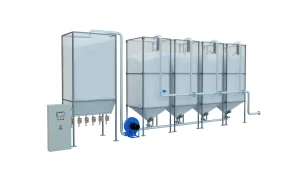
Foam Molding: The Most Important Phase of Foam Pattern Shaping
Foam molding refers to the process of shaping the pre-expanded and aged foam beads into the necessary foam pattern. It is typically done in a mold, which is shaped as per the final casting shape. The foam beads are filled into the mold, and they are welded together with the help of steam to create the foam pattern. Foam molding accuracy is relying on things like mold design, steam pressure, and cooling time. By having accurate mold design and rigid control of molding conditions, one can obtain a foam pattern with good dimensional tolerance and fine surface finish.
Hangzhou Ouchen Technology Co., Ltd. vertical and horizontal foam molding machines have a significant effect on the automation and high-quality equipment manufacturing of lost mold casting. Vertical molding machine is provided with remote control and debugging function. The horizontal forming machine is provided with a high-speed mold-change system.
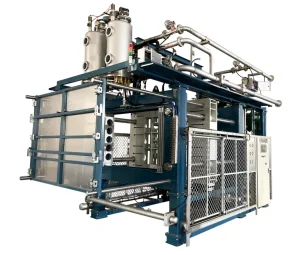
Key Points during Preparation Process
Preise Pressure Control and Temperature Control
Temperature and pressure are the most important parameters that control foam preparation. Temperature is a measure of the rate of expansion of foam beads during pre-expanding, whereas steam pressure is a measure of the uniformity of expansion. Steam pressure is the controlling parameter for hardening the melted foam beads into a solid part in foam molding, whereas final shape and size stability of the foam pattern are controlled by cooling temperature.
Key Quality Inspection Indicators
Density: Foam density is an important quality factor. Consistent density throughout the foam pattern will promote consistent performance in casting. Density variations will make the foam shrink or expand non-uniformly and create defects in casting.
Dimensional Accuracy: Foam pattern should be of the correct dimensions to match the final casting dimensions. Dimensional variations will create casting defects and require additional machining or rework.
Foam Surface Quality: The foam pattern surface finish determines the casting surface quality. A defect-free surface finish in the foam pattern can result in a casting with a better surface finish, with fewer needs for post-casting finishing operations.
Common Problems and Solutions
Foam Defects Identification
Foam Shrinkage: The shrinkage of the foam pattern can take place during the cooling cycle or after casting is done. It can cause dimensional inaccuracy of the final casting.
Deformation: The deformation of the foam pattern can be caused by mishandling, non-uniform heating, or excessive pressure during the process of preparation. It can result in a casting that is not specified.
Porosity: The porosity in the foam pattern can be due to the inability of foam beads to bond together during molding or air bubbles in the foam. This can lead to porosity in the ultimate casting, and its mechanical properties will be compromised.
Targeted Solutions
For Foam Shrinkage: The shrinkage can be minimized by maintaining a control over the cooling rate of the foam pattern. Even and slow cooling will reduce the internal stresses within the foam, thereby preventing shrinkage. Reducing the use of foam materials with high shrinkage rates can also help in reducing shrinkage.
For Deformation:Proper manipulation of the foam pattern during the preparation phase is necessary. Good mold design and even application of heat and pressure can prevent deformation.
For Porosity: Increasing the melt of the foam beads during moulding by increasing pressure and steam time can reduce porosity. Vacuum treatment with air bubbles also removes from foam can be the ultimate solution for it.
Conclusion: Summary and Reflection
In all, foam preparation is a very important part in lost foam casting process. From the choice of correct foam material to strict control of the preparation process, each step plays a role in producing quality foam patterns and ultimately in successful castings.Knowledge of the fundamentals, essentials, issues, and solutions in foam preparation, and following leading producers such as Hangzhou Ouchen Technology Co., Ltd for lost foam equipment, you can be a leader in the competitive world of lost foam casting.

